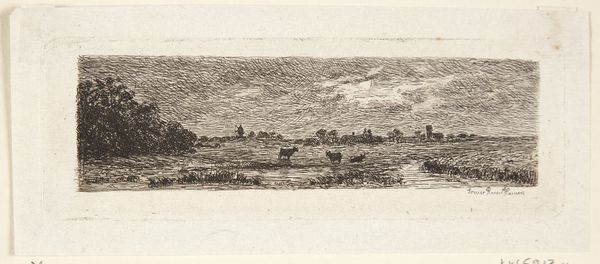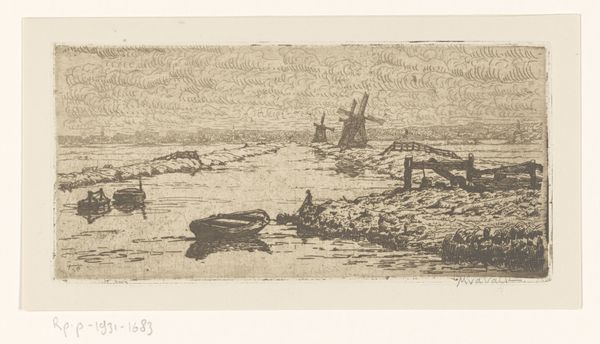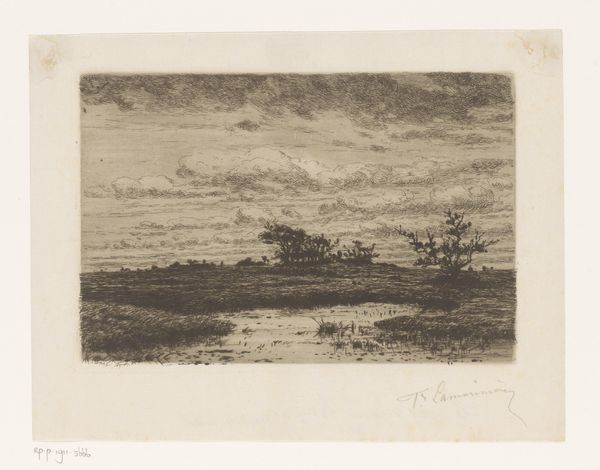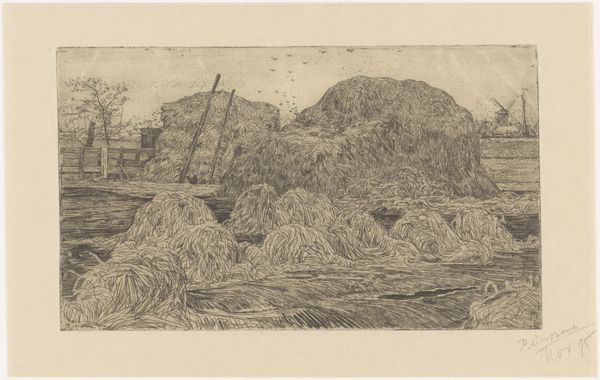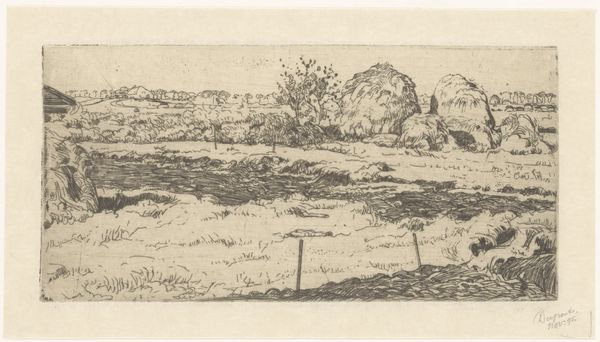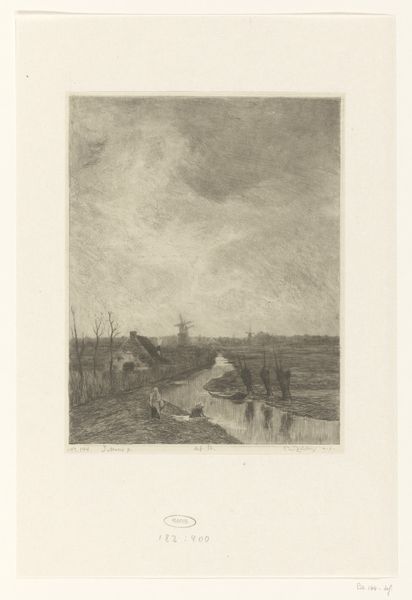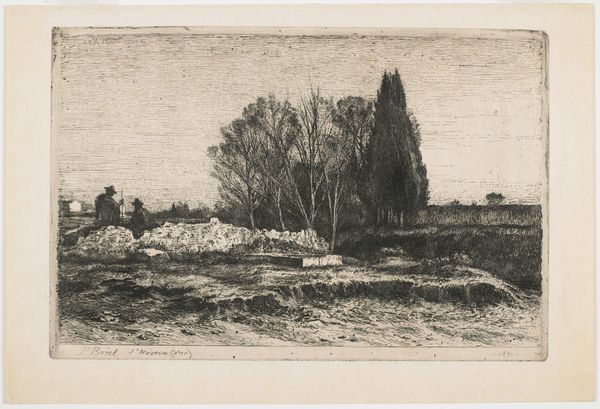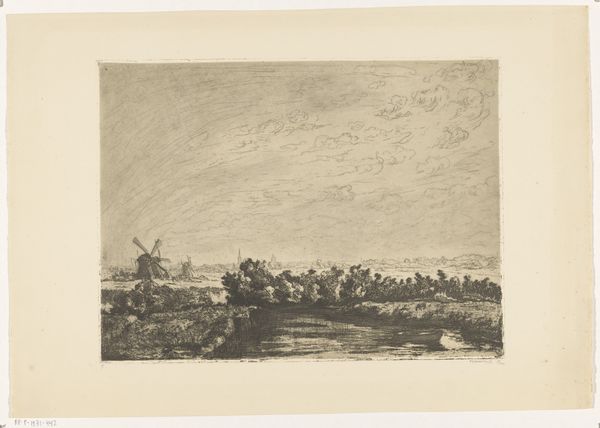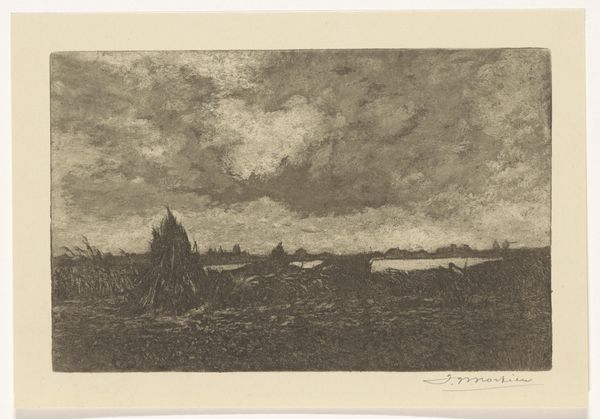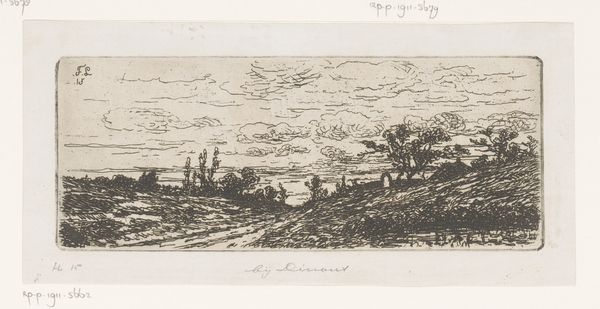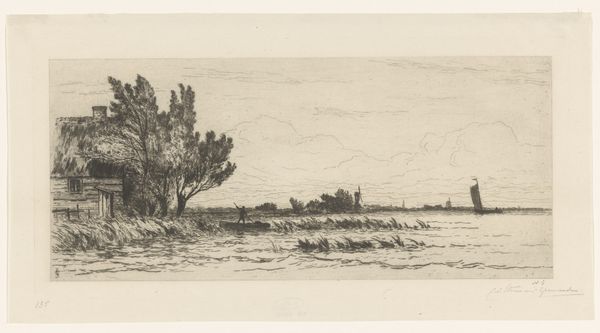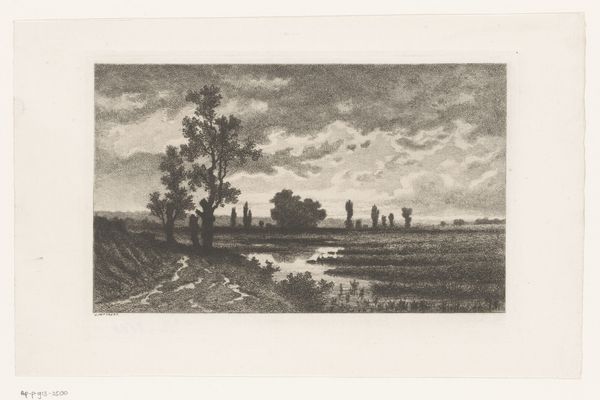
Dimensions: height 124 mm, width 248 mm
Copyright: Rijks Museum: Open Domain
Editor: We are looking at “Pad door landschap met plassen,” or "Path through landscape with puddles," an etching by Maurits van der Valk, dating sometime between 1867 and 1931. It has a quiet, almost melancholic feel. What strikes you most about this work? Curator: I am immediately drawn to the artist’s choice of landscape. It isn't grand or sublime, like you see in much of Romantic landscape painting. Rather, it’s a common scene, an everyday space of labour. How might that reflect the cultural and political concerns of the artist and the period? Consider how industrialization and urbanization were impacting rural communities and ways of life. Does this image celebrate that community, or perhaps mourn its disappearance? Editor: It's interesting to consider the social implications of this "common scene". I hadn't thought about that. Curator: And what about the puddles? Water is often a potent symbol, often interpreted through a gendered lens in art historical discourse. What do you read from it here? Editor: Perhaps reflection and quiet contemplation? A stillness? It almost invites us to pause and observe, to consider our place within the landscape and reflect on how we are a part of it. Curator: Precisely. I encourage everyone to think about landscapes through a contemporary lens too. For example, who has access to nature? What is the impact of ecological destruction and climate change? What do you consider a "common scene" and why? Editor: That's an eye-opening point of view that I had not considered. It’s not just a pretty landscape; it is so much more complex! Thank you. Curator: You're welcome! Seeing art as a form of visual activism really opens doors to wider questions about how we negotiate culture.
Comments
No comments
Be the first to comment and join the conversation on the ultimate creative platform.
